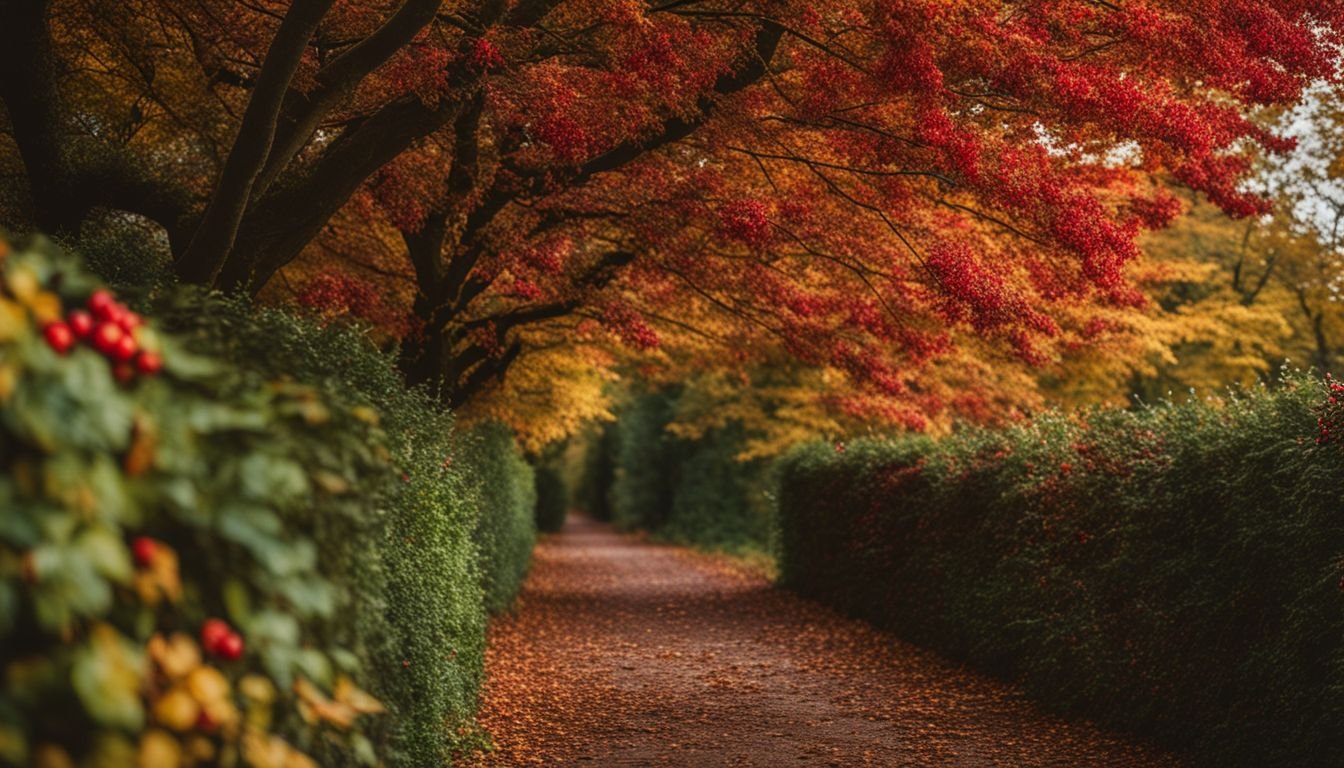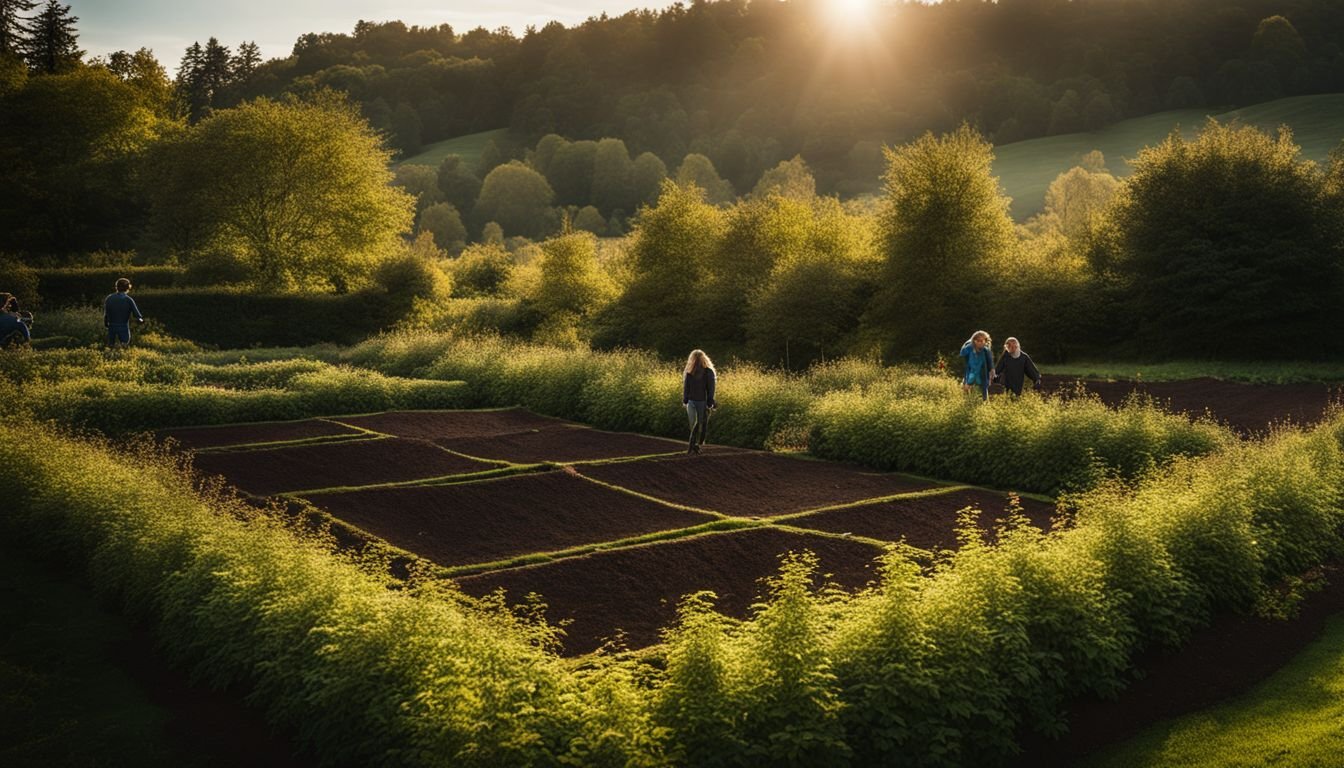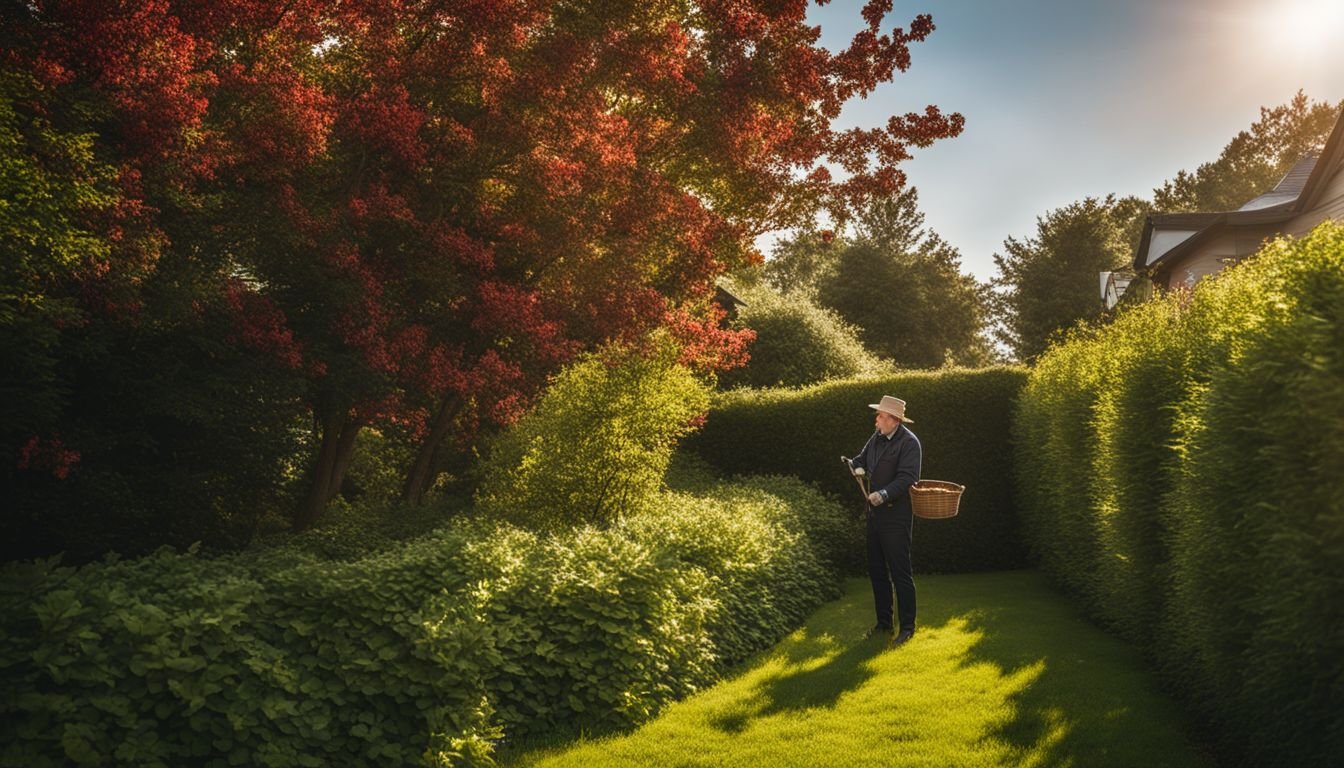Gardening down under sure comes with its fair share of hurdles. Battling against the relentless sun and the all-over-the-shop weather, trying to find those perfect plants that not only survive but flourish, can feel like a bit of a mission.
And if it’s a hedge you’re after—to bring in a bit of beauty, privacy, or even up your home security—you might have found yourself running into more than just a few snags. Believe us, we’ve walked that path ourselves.
But here’s the ray of hope: we stumbled across an absolute gem—Hawthorn hedges.
Diving deep into our gardening adventures led us to one golden nugget of wisdom: Hawthorn hedges aren’t just any old plant; they’re as Aussie as Vegemite! That means these beauties are right at home in our unique climate and soil mix.
Armed with this insight and heaps of research, we’re stoked to pass on everything we’ve learnt about nurturing these gorgeous barriers. From picking the perfect spot in your yard to keeping those pesky critters at arm’s length, our guide has got you sorted.
Keen for a lush garden?
Key Takeaways
- Plant hawthorn hedges in a sunny or partly shaded spot and make sure the soil drains well. They’re not picky about the type of soil, so whether it’s dry, normal, or moist, they’ll likely do fine.
- Keep about 30 – 45 cm space between each sapling when planting to give them room to grow without competing for resources. The best times to plant are during the cooler months of autumn or spring.
- Water your new hawthorn plants thoroughly right after planting them. After that, they only need extra water during prolonged dry spells. Apply a layer of mulch around their base to help retain moisture and keep weeds at bay.
- Prune your hawthorn hedge late in winter or early in spring before new growth starts. This helps encourage healthy blooms and growth. Use sharp tools for clean cuts and shape the hedge so it’s narrower at the top.
- Watch out for pests like aphids and diseases such as fireblight which can damage your hedges. Regular checks can catch problems early on, and promoting beneficial insects helps control aphid populations naturally.
Understanding Hawthorn Hedges

We all know Hawthorn hedges as those thick, green barriers that add beauty to any garden. They come in types like the common Hawthorn (Crataegus monogyna) and the Midland Hawthorn (Crataegus laevigata), both perfect for creating dense hedging.
With their lovely white blossoms in spring and red berries, called haws, in autumn, they offer food for birds while making your garden look stunning.
Description and features of Hawthorn Hedges
Hawthorn hedges, known locally as Quickthorn, bring beauty and utility to our gardens. They boast mid-green leaves, white scented blooms in spring, and bright red fruit called haws come autumn.
These plants not only add a splash of color but also provide a safe haven for local wildlife. With their sharp thorns, they act as natural barriers against intruders.
These versatile shrubs thrive across Australia due to their resilience. They can grow in any soil type and adapt well to sun or dappled shade. Whether you’re near the coast or inland, Hawthorn hedges stand strong against the elements.
Perfect for creating boundaries ranging from 1m to 5m high, these perennials shoot up at an impressive rate of 40-60cm annually.
“Hawthorn hedges: The perfect blend of beauty and defense for your garden.”
Tips for Growing Hawthorn Hedges

For flourishing hawthorn barriers, picking the right spot and prepping the soil makes all the difference. Get ready to discover more ways to boost your green thumb skills!
Ideal conditions and planting guides
Growing hawthorn hedging brings life and colour to our gardens. It offers a haven for wildlife and a spectacle of flowers and fruits for us to enjoy. Here are the steps we follow to make sure our hawthorn hedges thrive:
- Choose the Right Spot: Hawthorn hedges prefer a place where they can soak up the sun or enjoy dappled shade. They’re not fussy, so any spot works as long as it’s not too wet.
- Prepare the Soil: These hedges grow in any soil type – dry, normal, or moist. We make sure the ground is well-drained before planting.
- Spacing Is Key: When we plant hawthorn saplings, we leave about 30-45 cm between each one. This gives each plant enough room to spread its roots without fighting with its neighbour for space.
- Planting Time: Autumn or spring is the perfect time for putting these plants into the ground. The cooler weather helps them establish their root system.
- Watering Schedule: Right after planting, we give them plenty of water to help settle the soil around their roots. After that, they only need extra water during very dry periods.
- Mulching Helps: We apply a generous layer of mulch around the base of our hawthorn plants. This keeps moisture in and weeds out, making less work for us in the long run.
- Feeding Our Hedges: In early spring, we scatter some general-purpose fertiliser around our hawthorns to give them a boost before they start growing again.
- Check Seed Dormancy: Sometimes seeds need a bit of help to wake up and grow. We check with nurseries or garden centres about breaking seed dormancy if we decide to grow from seeds instead of saplings.
- Selecting Plants: Whether grafted or grown from seeds, choosing healthy specimens from reputable nurseries stock ensures a strong start.
By sticking to these guidelines, we set our hawthorn hedging on the right track towards becoming lush, dense barriers that charm everyone who sees them.
Maintaining Hawthorn Hedges
Keeping your Hawthorn hedges healthy calls for regular pruning. This not just shapes them but also boosts their growth and blooming potential. You’ll need to watch out for pests like aphids and diseases such as fireblight, which can harm your plants.
For this chore, use clean cutting tools and keep an eye on the health of your hawthorn to ensure it thrives in your Aussie garden.
Pruning and hedge maintenance
We all know that keeping our hawthorn hedges in top shape takes a bit of work. To help, we’ve put together some tips on pruning and hedge maintenance.
- Choose the right time to prune your hawthorn hedges. Late winter or early spring is best, just before new growth starts. This timing helps encourage healthy plants.
- Use sharp tools for pruning. Clean cuts with secateurs or loppers prevent damage and disease in your hawthorn trees.
- Start by removing any dead or diseased branches first. This keeps the hedge healthy by stopping disease spread.
- Shape the hedge with care. Hawthorn hedges look great when they’re neat and tidy. Trim the sides in a slightly tapered shape, narrower at the top so sunlight can reach the lower branches.
- Thin out old wood every few years to let light and air into the centre of the hedge. Select a few of the older stems and cut them back to ground level or to a strong young shoot.
- Watch out for pests like aphids and diseases like fireblight. Check your plants regularly and treat problems early to keep your hedge vibrant.
- Water your hawthorn hedge deeply but not too often, especially during dry spells. Proper moisture encourages deep root growth.
- Mulching around the base of your hedge helps retain soil moisture and suppresses weeds that compete for nutrients.
Following these steps ensures your hawthorn hedge stays healthy, looks fantastic, and continues to thrive in your garden.
Dealing with pests and diseases
Caring for hawthorn hedges means keeping an eye out for unwanted guests like aphids and diseases such as fireblight. These invaders can harm your lovely hedge, but we’ve got some tips to help you manage them effectively.
- Regularly check your hawthorn for signs of pests. Aphids, tiny bugs that suck the sap from plants, love hawthorns. You’ll spot them easily on the underside of leaves or on new shoots. If they’re present, use a garden hose to spray them off or apply an insecticidal soap.
- Keep an eye out for leaf spots. This disease causes brown spots with yellow edges on the leaves of your hedge. To fight leaf spots, remove and destroy affected leaves and avoid wetting the foliage when watering.
- Fireblight is a serious disease that turns branches black as if they were scorched by fire. Cut back any infected branches well below the damaged area, disinfecting your tools between cuts with a bleach solution to prevent spreading.
- Encourage beneficial insects like ladybugs and lacewings into your garden. They eat aphids and can help keep their populations down naturally without harming your plants.
- Make sure your hedges are well – nourished and not stressed from lack of water or nutrients as healthy plants are less likely to succumb to pests and diseases.
- Practice good hygiene in the garden by cleaning up fallen leaves and debris where pests can breed and diseases can linger over winter.
By following these steps, you’ll ensure that your hawthorn hedges stay healthy and vibrant, providing beauty and privacy in your Australian garden for years to come.
Conclusion
Growing Hawthorn hedges in Australia is simple with the right knowledge. These native barriers not only boost your garden’s beauty but also protect and house local wildlife. Remember to plant them in any soil type, prune after blooming or wait until fall, and keep an eye out for pests like aphids.
Water them well, especially during dry spells. With these practices, you’ll enjoy a healthy and vibrant hedge that benefits both your home and the environment.
FAQs
1. What are the best plants for creating hedges in Australian cottage gardens?
For Australian cottage gardens, Hawthorn (Maythorn), English Yew (Taxus baccata), Cherry Laurel, and Camellia are excellent choices for growing thick, lush hedges.
2. How do I grow a Hawthorn hedge from seeds?
To grow a Hawthorn hedge from seeds, first, collect Haws (the fruit) in autumn. Clean them and allow them to germinate by sowing them in pots or directly into the ground during spring after they’ve gone through cold stratification over winter.
3. Can I use any special techniques to shape my hedges more effectively?
Yes! Hedge laying is an effective technique used to shape your hawthorn hedge into a dense barrier or decorative feature within your garden. This method involves partially cutting through the base of the plant stems and laying them sideways to encourage new growths.
4. Are there any other plants that can be combined with Hawthorns for diverse hedging?
Certainly! Alongside Hawthorns, you can plant Potentilla, C. laevigata (a type of Camellia), and even Cherry Laurels to add variety in texture and color for a more visually appealing hedge.
5. How often should I maintain my hawthorn hedge to keep it healthy?
Regular maintenance is crucial; trim your hawthorn hedge at least twice a year—once in late spring after flowering to shape it and again in mid-autumn to keep it tidy throughout winter.
